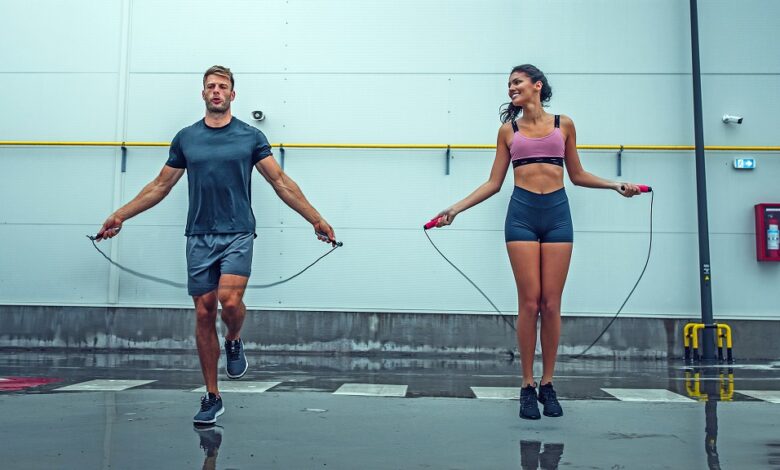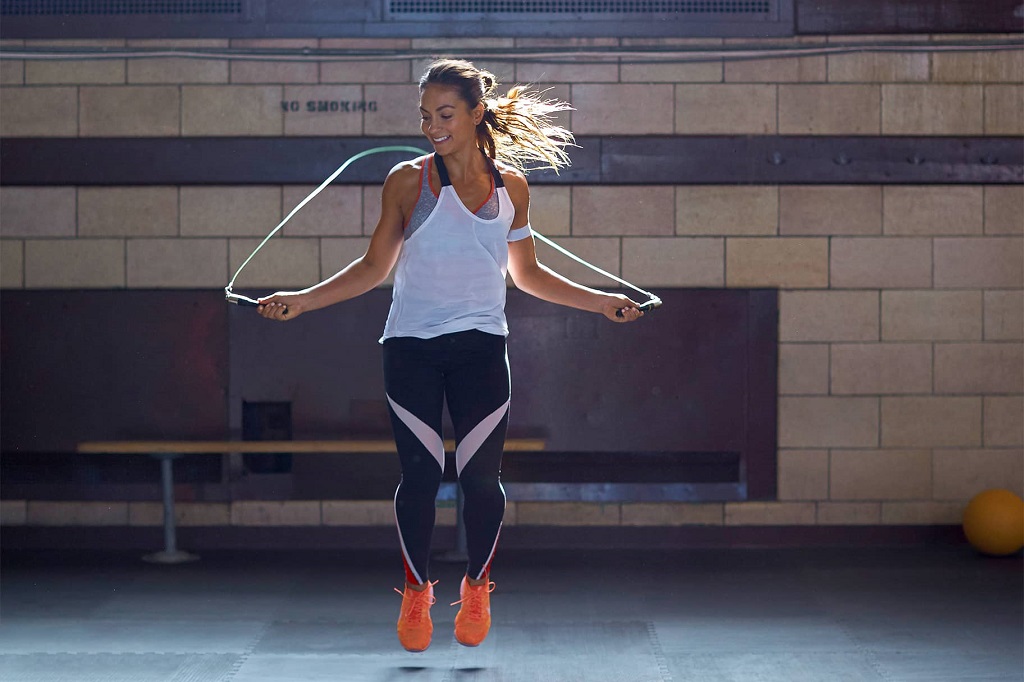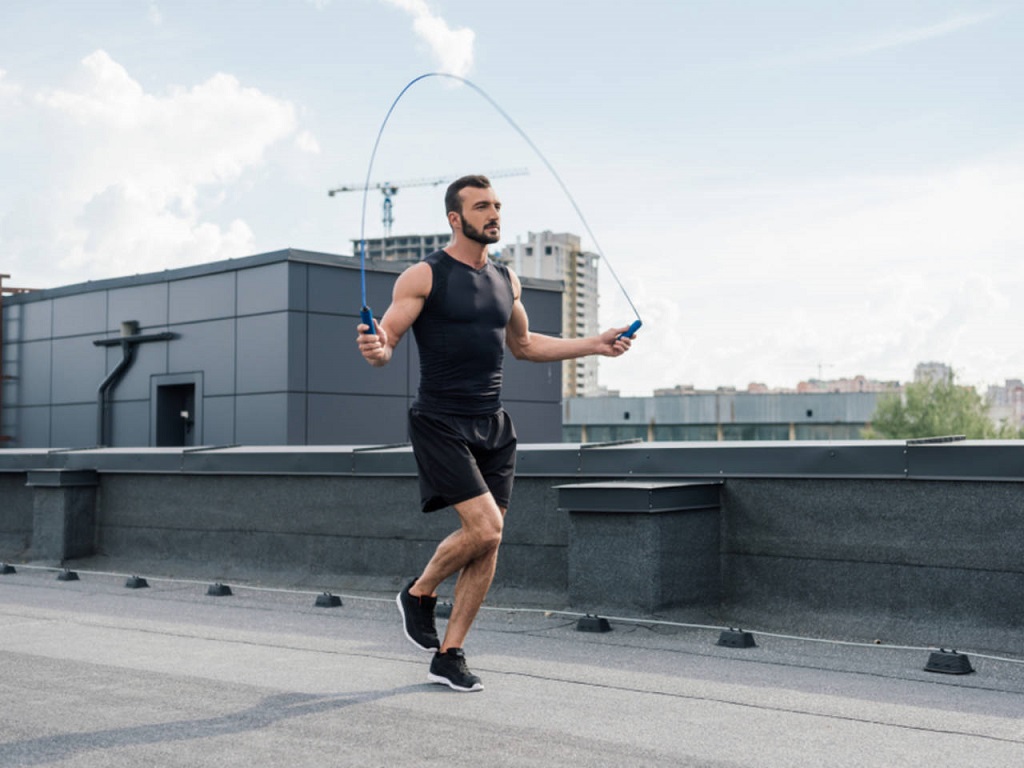
Jumping rope is a fantastic and underrated exercise that can help you burn calories, improve your cardiovascular fitness, and even boost your coordination. It’s like a magical rope that can turn your boring workout routine into a fun and engaging activity. Plus, it’s super affordable and portable, making it accessible for just about anyone, anywhere.
In this guide, I’m going to walk you through the basics of jumping rope for exercise. Whether you’re a beginner or looking to level up your jump rope skills, we’ve got you covered. So grab your rope, put on your sneakers, and let’s get jumping!
Choosing the Right Rope
Before buying rope, it’s important to select the right one for you. With a variety of jump ropes available, the choice largely depends on your goals and skill level.
- Basic Jump Rope: If you’re just starting, go for a basic jump rope made of PVC or licorice. These are affordable and perfect for beginners.
- Speed Rope: If you’re more advanced and want to focus on speed and agility, consider a speed rope. They have thin, lightweight handles and a cable, allowing for faster rotations.
- Weighted Jump Rope: For added resistance and a more intense workout, try a weighted jump rope. They have heavier handles or ropes, which can help build muscle and improve your endurance.
- Adjustable Rope: An adjustable rope is a great choice if you’re sharing it with others or want to experiment with different lengths.
Finding the Right Length
The length of your jump rope matters. To find the right length:
- Stand on the center of the rope with one foot.
- Pull the handles up to your chest.
- The handles should reach your armpits. If they go much higher or lower, adjust the length accordingly.
Getting the right length ensures that the rope clears the ground smoothly and prevents tripping.
Proper Footwear
The right shoes can make your jumping experience more comfortable and effective. Opt for supportive sneakers with good cushioning to absorb impact. Cross-training or aerobic shoes are great choices, as they offer the right balance of support and flexibility. Don’t forget to workout before starting your rope jumping exercise.
Proper Technique
Now, let’s get into the nitty-gritty of jump rope technique. It might seem simple, but there’s more to it than just hopping over the rope.
- Hand Position: Hold the handles at your sides, with your elbows slightly bent. Keep your wrists relaxed and your grip firm but not overly tight.
- Jumping Motion: Jump off the balls of your feet, not your heels. Land softly to reduce impact. Your knees should be slightly bent, and your core engaged.
- Rope Rotation: Swing the rope with your wrists, not your arms. It’s all in the wrist action. Imagine you’re flicking water off your hands.
- Timing: Time your jumps to the rope’s rotation. You want to jump just high enough for the rope to pass under your feet. Don’t jump too high; it’s not a high jump contest.
- Breathing: Remember to breathe! It’s easy to forget when you’re focused on jumping. Inhale and exhale rhythmically to maintain your endurance.
- Keep It Relaxed: Avoid tensing up your shoulders and neck. Stay relaxed and loose to make the process smoother.
Start Slow and Steady
If you’re new to jumping rope, don’t rush into intense workouts. Start slow to get the hang of it. Begin with 1-2 minutes of jumping, followed by a rest period. Gradually increase your jump time as your skills improve.
Incorporate Variations
Jumping rope doesn’t have to be monotonous. You can spice it up with different variations to keep things interesting:
- Double Unders: Jump high and swing the rope extra fast to pass under your feet twice in one jump. This is a challenging move that requires practice.
- Crossovers: Cross your arms in front of you while jumping. It not only looks cool but also engages your core.
- High Knees: Bring your knees up higher with each jump to engage your core and improve endurance.
- Side Swings: Swing the rope from side to side instead of front to back. This challenges your coordination and works your obliques.
- Alternate Foot Jumps: Instead of jumping with both feet together, alternate between left and right feet with each jump.
- Jumping on One Foot: Test your balance and agility by hopping on one foot for a set period and then switching to the other.
Set Goals and Track Progress
Like any fitness routine, setting goals is essential. It gives you something to work towards and helps you stay motivated. Start with achievable goals, such as increasing your jump time by 30 seconds each week or mastering a new jump rope move.
Tracking your progress can be a powerful motivator. Keep a journal or use a fitness app to record your jump rope sessions, noting the duration, variations, and how you felt during the workout.
Warm-Up and Cool Down
As with any workout, it’s crucial to warm up your body before jumping rope. Spend a few minutes doing dynamic stretches like arm circles, leg swings, and ankle rolls to prepare your muscles and joints.
After your jump rope session, cool down with static stretches to improve flexibility and prevent muscle soreness. Focus on your calves, hamstrings, quadriceps, and shoulders.
Safety Tips
Jumping rope is generally safe, but it’s essential to take precautions:
- Ensure you have enough space to jump without hitting objects or people.
- Choose a flat, non-slip surface to minimize the risk of slipping.
- Pay attention to your form to avoid overexertion or injury.
- If you have any medical conditions or concerns, consult a healthcare professional before starting a new exercise routine.
Consistency is Key
Consistency is the secret sauce to success in fitness. Make jumping rope a regular part of your routine. Whether it’s 10 minutes a day or 30 minutes every other day, find a schedule that works for you and stick to it.
Remember, progress takes time, so be patient with yourself. You might stumble or trip over the rope occasionally, but that’s all part of the learning process. Keep going, and you’ll see improvements in your stamina, coordination, and overall fitness.
Jumping rope is an excellent full-body workout that’s both fun and effective. It doesn’t matter if you’re aiming to shed a few pounds, boost your endurance, or just add some variety to your fitness routine – jumping rope has got you covered.
So, are you ready to hop into a new adventure with your trusty jump rope? Grab it, put on those sneakers, and let’s embark on a journey to a fitter, healthier you!
FAQs
- Can jumping rope help me lose weight?
Absolutely! Jumping rope is a high-intensity cardio workout that burns calories quickly. It can help you create a calorie deficit, which is essential for weight loss. Just be sure to combine it with a balanced diet for the best results.
- How long should I jump rope each day?
The ideal duration varies based on your fitness level and goals. Beginners can start with 10-15 minutes a day and gradually increase the time as they become more comfortable. Aim for at least 30 minutes of jumping rope most days of the week for significant fitness benefits.
- Is jumping rope suitable for all fitness levels?
Yes, jumping rope can be adapted to suit different fitness levels. Beginners can start with basic jumps and shorter sessions, while advanced individuals can incorporate high-intensity moves like double unders and crossovers. Always listen to your body and progress at your own pace.
- Can I jump rope indoors or do I need a lot of space?
You can jump rope indoors, but you’ll need enough ceiling height to avoid hitting the rope. A clear space with a non-slip surface is ideal. If you prefer the outdoors, find a flat and safe area to jump rope.
- Can I jump rope if I have joint problems or injuries?
Jumping rope can be high-impact, so it might not be suitable for everyone, especially if you have joint issues or injuries. Consult with a healthcare professional before starting a jump rope routine to ensure it’s safe for you. If you get the green light, start slowly and focus on good form to minimize impact on your joints.








